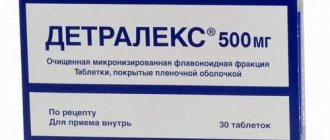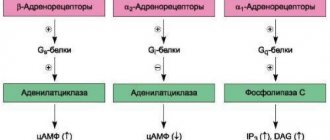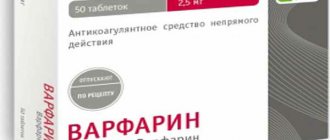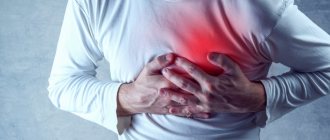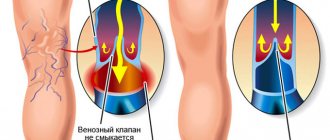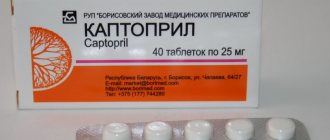In what cases is it best to use Validol, and in what cases is it best to use Nitroglycerin? As a rule, people do not always see the difference between these drugs. The effectiveness of Validol for heart disease is very doubtful; its pharmacological activity is weakly expressed, but there are practically no side effects. What is better - "Validol" or "Nitroglycerin" - for heart pain?
The second medicine is considered a more effective remedy for cardiovascular diseases. They differ from each other in activity, as well as in the range of indications and side effects.
When and what medicine is best to take
In what cases are Validol and Nitroglycerin taken? The first drug contains valerian ether and menthol. The medicine has a slight sedative effect and quickly dilates the coronary vessels.
What else does Validol help with? With it you can:
- Eliminate minor pain in the heart. Most people who suffer from chronic cardiac diseases keep Validol in their medicine cabinet as a first aid medicine.
- Calm down during hysteria and neurotic conditions.
It should be admitted that Validol is a very weak medicine; it is practically menthol lozenges.
What does Validol help with? This drug can eliminate pain near the heart, which is caused by vegetative-vascular dystonia, as well as neuroses, since it has a slight calming effect on the nervous system, and its vasodilating effect is too weak and occurs reflexively.
But “Nitroglycerin,” on the contrary, has proven itself well as a “reactive” medicine for patients who have developed acute ischemic heart pain. The medicine can eliminate unpleasant sensations in a short time and acts as a standard with which all modern means suitable for solving such problems are compared.
The therapeutic effect of nitroglycerin is that it sharply expands the capillaries, from which the heart itself is nourished. Thanks to this complex effect on the myocardium and surrounding vessels, it ensures durability and immediate therapeutic effect.
Instructions for use
Validol is taken sublingually. It must be consumed three times a day, regardless of meals. If the drug does not help cope with angina, the doctor replaces it with another drug. In case of an attack of neurosis, the tablet is dissolved once.
The medicine is sometimes prescribed to pregnant women in the first trimester. It helps to cope with toxicosis, flatulence, and gastrointestinal problems. The use of tablets should be supervised. It is necessary to monitor blood pressure and heart rate.
Risks of exceeding the dosage of Validol
During breastfeeding, the drug is not prescribed, since the effect is unknown - there is no data whether the drug substances pass into the milk of a nursing mother. Presumably the resulting effect is lower than the risk to the newborn.
Nitroglycerin is also taken sublingually. It is drunk when there is cardiac pain or before stress, which can cause angina. Take one or two tablets. It is necessary to take no more than one tablet at a time due to the high dosage of the drug.
In case of acute myocardial failure, it is allowed to take two tablets with an interval of 10 minutes. You must take the medicine under the supervision of a medical specialist.
Is it possible to use Nitroglycerin and Validol at the same time? Many doctors answer this question in the affirmative. Menthol, which Validol contains, alleviates some of the side effects of Nitroglycerin. It helps relieve nitrate migraines that the medication sometimes causes.
In addition, when there is pain in the heart, a person has a fear of death, which intensifies the pain and worsens the condition. It is in such cases that cardiologists recommend the simultaneous use of two medications - one will soothe, and the second will dilate the coronary arteries and improve blood flow to the heart.
The main thing with simultaneous use is compliance with dosages. If Nitroglycerin does not alleviate the condition, you should call an ambulance to avoid serious consequences.
How to take Validol
Validol tablets are recommended for patients to dissolve under the tongue. You can take the medication regardless of meals, three times a day. The duration of therapy is determined by a specialist individually for each patient.
If no positive pharmacological effect is observed within 10-15 minutes after resorption of the drug, the patient should consult a doctor to prescribe another medication. If you feel sick while riding in public transport, it is enough to take Validol once.
Use of Nitroglycerin
To prevent complications, you must use the drug as prescribed by your doctor. According to the instructions for use for Nitroglycerin tablets, the dosage is 1 piece.
It is kept in the oral cavity until completely dissolved, without swallowing. Nitroglycerin should be used immediately when the first symptoms of an angina attack occur or before intended physical exercise.
In case of stable angina pectoris, the effect may also occur with a lower dosage; in this situation, the remainder of the tablet that has not dissolved should be spat out. In most cases, improvement is noted within the first 3 minutes of taking Nitroglycerin. If the angina attack is not eliminated within five minutes, you need to take 1 more tablet.
If there is no pharmacological effect after using 2 Nitroglycerin tablets, you should immediately consult a doctor.
The spray is administered on or under the tongue, preferably in a sitting position, while holding your breath. After injection, the medicine is not swallowed immediately, but is held for a few seconds.
To avoid complications, Nitroglycerin must be taken as prescribed by a doctor. When the first symptoms of angina occur, 1-2 dosages of the spray are administered.
If necessary, another injection is likely to be administered, but no more than three doses within 15 minutes. If after using 3 doses within this time the condition does not improve, it is important to consult a doctor. The maximum single concentration is 3 doses of spray.
If the prescription for the use of “Nitroglycerin” is considered to be the prevention of angina pectoris, the medication is administered 1 dose ten minutes before possible exercise or stress. It is not necessary to shake the spray before use.
The role of nitrates in modern therapy of chronic ischemic heart disease
Nitrates, or more precisely, nitrovasodilators (NVDs), are a group of drugs that have vasodilating properties and differ quite significantly in their chemical structure. They are united by the following mechanism of action: as a result of complex chemical transformations, all NVPs are converted into nitric oxide (NO), a substance that is an analogue of the so-called endothelial relaxing factor. NO activates guanylate cyclase, resulting in the formation of cyclic guanosine monophosphate, which has the ability to dilate vascular smooth muscle cells.
Classification
Nitrovasodilators include organic nitrates, as well as sydnonimines. Of the organic nitrates, three drugs are currently used in clinical practice: glycerol trinitrate (nitroglycerin), isosorbide dinitrate (ID) and isosorbide-5-mononitrate (IMN), which is a natural metabolite of isosorbide dinitrate. Among the sydnonimines, molsidomine is used.
Historical information
Nitrates have long been used in cardiology. The experience of clinical use of organic nitrates for the purpose of relieving angina attacks goes back about 140 years. The first drug of this group was amyl nitrite, which in 1869 the English doctor L. Brunton used to relieve attacks of angina. In 1879, his compatriot W. Murrel began prescribing nitroglycerin (NG) for the same purpose, a drug that is still successfully used by almost all patients with coronary heart disease (CHD). If the advisability of prescribing nitroglycerin taken “under the tongue” has never been questioned, then the effectiveness of nitrates used orally in the 1970s. some authors denied it altogether. The reason for this was the work of Needleman et al., who demonstrated in experiments on rats that after ingestion and absorption in the stomach, organic nitrates are almost completely destroyed during the first passage through the liver by the enzyme glutathione-S-reductase. Further research and simple clinical experience showed, however, that doubts about the effectiveness of nitrates taken orally were unfounded. Numerous studies conducted in the late 1970s and 80s convincingly demonstrated that after oral administration of isosorbide dinitrate and nitroglycerin, sufficient concentrations of these drugs are created in the blood and at the same time a clear pharmacological effect is recorded.
Indications for use
Nitrates are antianginal (or, more precisely, anti-ischemic drugs), i.e., they have the ability to prevent the occurrence of myocardial ischemia or reduce its severity. Due to this, nitrates can stop (when using fast-acting dosage forms) or prevent the occurrence of angina attacks. Therefore, there is no alternative to nitrates prescribed for the immediate relief of angina attacks. In such cases, it is recommended to use sublingual dosage forms of nitroglycerin or isosorbide dinitrate or more modern spray dosage forms. In addition, sublingual dosage forms of nitrates and sprays can be used to prevent angina attacks if they are used a few minutes before a planned, short-term exercise.
As for the use of nitrates for long-term prevention of angina attacks, in modern international recommendations they are given a secondary role after beta-blockers. Nitrates are recommended to be used in combination with beta-blockers or heart rate-lowering calcium antagonists if monotherapy with one of these drugs does not produce the desired effect. The results of the studies showed that this combination of drugs has a greater antianginal and anti-ischemic effect than therapy with each of them separately. Currently, preference is given to long-acting dosage forms of nitrates.
Nitrates also have an antianginal effect in vasospastic and unstable angina, and therefore these drugs can be prescribed as additional therapy for these conditions.
Previously, nitrates were widely used to treat patients with chronic heart failure. However, after the introduction of angiotensin converting enzyme inhibitors into clinical practice, their role in the treatment of this disease has significantly decreased. Nevertheless, they can be involved in the complex therapy of this disease.
Nitrates are still used in the treatment of acute myocardial infarction (mainly in the form of intravenous dosage forms), but there is no evidence that they can affect the incidence of its complications or reduce its size. That is why the authors of modern recommendations for the treatment of acute myocardial infarction advise against the routine use of nitrates.
In this regard, nitrates are prescribed primarily to patients with coronary heart disease (CHD) suffering from stable angina pectoris. However, it should be noted that the clinical effectiveness of NVD for exertional angina largely depends on which drug, in what dose and dosage form is used, as well as on the regimen of its administration.
Contraindications
There are few contraindications to the use of nitrates. According to the official recommendations of the American Heart Association, hypertrophic obstructive cardiomyopathy is a relative contraindication (nitrates in this disease can cause an increase in the degree of obstruction of the left ventricular outflow tract, affect the severity of mitral regurgitation and thereby cause presyncope or syncope). Nitrates can have the same effect in patients with severe aortic stenosis.
Nitrates are prescribed with caution for low blood pressure (BP), but there are no clear restrictions. It is not recommended to prescribe nitrates for increased intracranial pressure.
The previously existing position, based on the results of animal experiments conducted at the beginning of the 20th century, that intraocular pressure increases when taking nitrates, has not found objective confirmation. This is why glaucoma (any form of it) is not among the contraindications to the prescription of nitrates.
Do nitrates affect the prognosis of coronary artery disease?
This issue has been discussed for a long time. Conducted in the 90s of the XX century. mega-trails - studies ISIS-4 (Fourth International Study of Infarct Survival) and GISSI-3 (Gruppo Italiano per lo Studio della Sopravvivenza nell'Infarto Miocardico) did not demonstrate a positive effect of nitrates on mortality and the incidence of complications in patients after acute myocardial infarction. From this we can conclude that nitrates do not affect the prognosis of life in patients with stable coronary artery disease.
Recently, publications have appeared whose authors question the safety of long-term therapy for IHD with these drugs. A meta-analysis published in 1999 assessed the results of 12 nitrate-beta-blocker comparison studies and 4 nitrate-calcium channel blocker comparison studies. There were no significant differences in clinical outcomes between the compared groups of drugs; in addition, a trend towards an increase in the number of anginal attacks in patients receiving nitrates was found. A retrospective analysis of data from the MSMI observational study and the randomized MDPIT study, which included patients after acute coronary syndrome, showed that long-term use of nitrates is associated with an increased risk of mortality. This was the impetus for the formation of the concept of the harmful effects of long-term treatment of IHD with these drugs.
So what should a practitioner be guided by in cases where prescribing nitrates is indispensable? And is the use of nitrates justified for the prevention of angina attacks or should they be replaced with other antianginal drugs? And if you do prescribe it, how can you reduce the risk of developing unwanted effects to a minimum?
Problems arising during treatment with nitrates
The main problem that often arises with regular nitrate therapy is the gradual weakening of their effect. This phenomenon is called addiction, or tolerance. The degree of development of addiction to nitrates varies greatly among different patients. Attempts to prescribe nitrates in such a way as to maintain a constant effect throughout the day often end in the development of addiction to these drugs, which was confirmed in the dissertation work of I. V. Popov, carried out in the department of preventive pharmacology, under the guidance of Professor S. Yu. Martsevich. The author directly points out that while taking isosorbide dinitrate, addiction is a statistically significant indicator and it manifests itself primarily by shortening the period of action of the drug. In addition, there may be a complete disappearance of the effect of taking nitrates with regular administration of the drug: in such cases, they speak of the development of complete addiction to them.
In general, there is a direct relationship between the degree of addiction to nitrates and how long and constantly the concentration of the drug in the blood is maintained. The principle of intermittent administration of nitrates is based on this pattern. It has been shown that if nitrate is absent from the body for 6–8 hours during the day or is present in very low concentrations (this period of time is called the “nitrate-free period”), then the risk of developing addiction is relatively small.
Nitrates are also characterized by withdrawal syndrome. A special case of this syndrome is the so-called negative aftereffect phenomenon, which occurs in response to the rapid disappearance of a drug from the blood. This phenomenon may occur, in particular, against the background of intermittent administration of nitrates. The possibility of this phenomenon has been reported after removal of transdermal NG from the skin, as well as after the end of action of NG tablets taken orally and short-acting ID tablets administered orally. After using IMN drugs, as well as extended-release ID tablets, no cases of negative aftereffects have been described. Nitrates are not toxic drugs even when prescribed in very large doses (several times higher than therapeutic ones). However, they often have side effects, the main of which is headache. It was noted that the frequency of development of this symptom does not depend on which nitrate is used - headache appears in more than half of the patients after the first dose of the drug. With continued therapy, the severity of the headache usually decreases, often completely disappearing. However, in some patients, the intensity of the headache does not decrease with continued nitrate therapy, which forces the doctor to stop treatment.
Principles of nitrate therapy
The main principle of nitrate therapy is to ensure maximum therapeutic effectiveness and, as far as possible, reduce the risk of unwanted and side effects. First of all, it is necessary to prevent the development of addiction to nitrates. Accustoming to nitrates is a more or less reversible phenomenon. If addiction has developed, then after discontinuation of the drug, sensitivity to it is usually restored within a few days. The main way to prevent the development of addiction to nitrates is based on this pattern - their intermittent use. The above-mentioned principle of nitrate therapy can be implemented in the clinic in only one way - to prescribe them differentially, depending on the characteristics of the course of the disease in each individual patient, the severity of angina pectoris, the stability of its course, and lifestyle characteristics. The presence of numerous dosage forms of nitrates makes it possible to cope with this problem.
With angina pectoris of the 1st functional class, when attacks occur predictably, with significant physical exertion, there is no need for constant therapy with nitrates. Such patients are prescribed short-acting nitrates before events that can cause an attack of angina, primarily before physical activity. For this purpose, aerosol forms of NG and ID are very convenient, providing a quick, pronounced and relatively short effect.
With angina pectoris of the 2nd and 3rd functional class, when angina attacks occur much more often, nitrates should be taken more regularly. However, even in this case, it is necessary to ensure a period free from the action of nitrate during the day. Therefore, in such patients, they try to maintain the effect of nitrates in the daytime, during the period of physical activity of the patient; Accordingly, the period of time free from the action of nitrate occurs at night, when the action of the drug is not necessary.
For more severe angina (in the presence of night attacks), nitrates are prescribed in such a way as to maintain the effect throughout the day. For this purpose, drugs with a pronounced prolonged action are prescribed 2 times a day (morning and at night), and drugs with a moderately prolonged action - 3-4 times a day. It should be remembered, however, that with this method of prescribing nitrates, sooner or later an addiction to them develops and the tasks of the practical physician include timely detection of this phenomenon.
Having made sure of the need to prescribe nitrates and chosen the optimal prescription regimen based on the severity of angina pectoris, any practicing physician is faced with the need to choose: in what dosage form he will prescribe nitrates (short-acting or long-acting). If preference is given to long-acting drugs, it is also necessary to make a choice in favor of isosorbide dinitrate or isosorbide mononitrate.
Experience gained by the authors in the use of various dosage forms of nitrates
The Department of Preventive Pharmacology has accumulated extensive experience in the use of nitrates for ischemic heart disease. Perhaps the materials from our research will help practicing physicians evaluate the advantages and disadvantages of one or another dosage form of extended-release nitrates. Next, we will present data from comparative studies of various drugs and dosage forms of nitrates: isosorbide dinitrate (moderately prolonged action - nitrosorbide) - isosorbide-5-mononitrate (significantly prolonged action - olicard retard, efox long), isosorbide dinitrate (moderately prolonged action - nitrosorbide) - isosorbide dinitrate (significantly prolonged action - Cardiquet), recently carried out in the Department of Preventive Pharmacology.
All studies were carried out according to a strict protocol, in compliance with the rules for conducting research in accordance with international standards - “Quality Clinical Research”. The studies were randomized, placebo-controlled, double-blind, and crossover. Each of them included from 15 to 30 patients with confirmed coronary artery disease, the presence of typical angina pectoris and a positive exercise test (EST). The use of placebo did not have a significant effect on the duration of physical activity on the treadmill. The comparison drug was isosorbide dinitrate with a regular duration of action (nitrosorbide), it was prescribed 3 times a day - at 7.00, 12.00 and 19.00; drugs with significantly prolonged action - 1 time per day, in the morning. The chosen regimen for prescribing the drugs actually pursued the goal of creating a constant effect during the daytime (before the patient’s physical activity) and a period free from the action of the drug, i.e., the regimen was intermittent.
The effectiveness of the compared drugs was assessed by the number of angina attacks and nitroglycerin tablets used, as well as using an objective method - tests with dosed physical activity on a treadmill, the criterion for stopping which was a typical angina attack for the patient. Side effects (headache) were assessed using a special questionnaire on a 10-point scale. All patients were given a diary in which they had to record the number of angina attacks and nitroglycerin tablets per week, as well as the number of headache attacks per week and their intensity on a 10-point scale.
It is important that the chosen regimen of taking the drugs was not accompanied by the development of the so-called “rebound syndrome,” which is expressed in an increase in attacks during the period when the effect of the drug has already ended. This was clearly confirmed in a comparative study of nitrosorbide - olycard, where the study protocol stipulated the implementation of PFN, 12 hours after taking nitrosorbide and 24 hours after taking olycard, in order to evaluate the so-called “0 hour effect”.
During this study, an effective single dose was selected for each patient using PFN; for nitrosorbide it ranged from 10 to 20 mg, for olicard - from 40 to 80 mg. 2 hours after a single dose of both nitrosorbide and olycard, the duration of physical activity on the treadmill increased significantly. Both drugs had a pronounced antianginal effect at the peak of their effect, but this effect was more pronounced after taking Olycard compared to nitrosorbide.
After 1 month of regular treatment with each of the drugs, the antianginal effect they provided remained the same, i.e., addiction to the drugs did not develop.
An analysis of patients' diaries showed that in the first 10 days of treatment, headaches were significantly and statistically significantly more often recorded during the use of nitrosorbide, compared to Olycard. Subsequently, with continued treatment, the frequency of headache episodes decreased; by the end of the month-long period of therapy with each drug, headache practically did not occur.
The significantly prolonged-acting drug used in this study, olicard retard, had undoubted advantages over the moderately prolonged-acting nitrosorbide, since its single dose provided an effect of the same severity and duration as a 3-time dose of nitrosorbide. We identified another important fact: the frequency of headaches, the most typical side effect of nitrates, in the first weeks of treatment when using a moderately prolonged-acting drug (nitrosorbide) and when prescribing a significantly prolonged-acting drug (Olycard) differed significantly. It should be noted that previously no special studies have been conducted to compare the frequency of side effects of nitrates depending on the dosage form used.
In the Nitrosorbide - Efox Long study, the drugs were also prescribed in effective doses, selected individually. For nitrosorbide, the effective single dose, as in the previous study, ranged from 10 to 20 mg, and for isosorbide mononitrate, from 50 to 100 mg. Taking the study drugs for a month also caused a statistically significant antianginal effect. The study protocol provided for the conduct of PFN 1 hour and 6 hours after the use of the drugs, in order to assess the effectiveness of the drugs during the period of their maximum effect and during the expected decrease in the effect. The increase in exercise duration 6 hours after taking nitrosorbide was 79.4 s, and after taking efox - 174.6 s. The differences between them were statistically significant. These data indicate a longer action of efox compared to nitrosorbide.
During treatment with Efox, there was a decrease in the number of angina attacks by almost 2 times compared to placebo. The same picture with regard to angina attacks was observed during treatment with nitrosorbide, but at the end of the course of treatment the number of angina attacks increased again, which may indicate the occurrence of partial addiction to the drug.
Significantly fewer side effects were reported with efox than with nitrosorbide. The identified side effects were not serious and did not require correction or discontinuation of therapy.
During the first week of treatment, while taking nitrosorbide, the number of headache episodes began to increase. Over the next 3 weeks, their number and intensity increased 4 times compared to placebo. Headache occurred significantly less frequently during treatment with Efox. Moreover, in the first week of treatment there was an increase in the number of headache episodes, and in the process of further treatment their number decreased and the intensity decreased.
Another study was conducted using a similar protocol. Two dosage forms of isosorbide dinitrate were compared: nitrosorbide and a significantly extended-acting drug, Cardiquet. Nitrosorbide was prescribed in a dose of 10 to 20 mg, 3 times a day, at 7.00, 12.00, 19.00, cardiquet - in a dose of 40–60 mg, 1 time a day, in the morning.
The study showed that both drugs have a clear antianginal effect. According to average data, regular use of the study drugs caused a statistically significant increase in all indicators of exercise tolerance. 2 hours after taking these drugs in optimal doses, an equally pronounced and distinct antianginal effect was observed.
After 4 weeks of regular treatment with each drug, the duration of PFN 2 hours after the next dose of the drug not only did not decrease, but even increased slightly in patients receiving Cardiquet. However, this increase was not statistically significant relative to a single dose of the drug. The duration of PFN 6 hours after taking the drugs was also slightly higher in patients who used Cardiquet. The data obtained allow us to conclude that after regular use of both drugs for 4 weeks, tolerance did not develop with the chosen regimen.
The number of headache episodes and its intensity in the first week of therapy were statistically significantly higher during Cardiquet therapy. After 4 weeks of therapy, the number of headache attacks and their intensity decreased significantly; this decrease was statistically comparable to the placebo period. There were no statistically significant changes in the frequency and intensity of headache episodes while taking nitrosorbide.
There were no significant differences in the effectiveness of the compared drugs during the study. Patients receiving Cardiquet in the first week of treatment had more frequent episodes of headache, and its intensity was higher.
Conclusion
Our studies have once again confirmed the high antianginal effectiveness of extended-release nitrates, prescribed in individually selected doses, in patients with coronary artery disease suffering from stable angina pectoris. With the chosen intermittent regimen, which provides an effect during the day and creates a period free from the action of nitrate at night, a clear and long-lasting antianginal effect was obtained in the absence of signs of addiction.
The degree of effectiveness of different drugs in the selected dosages was slightly different. A slightly more pronounced effect of isosorbide-5-mononitrate preparations was revealed, however, some differences were established between them.
It is important that to maintain the effect of nitrosorbide during the day, a 3-fold dose of this drug was required, while for significantly prolonged forms of nitrates a single dose in the morning was sufficient. Of course, the possibility of a single use of the drug increases patient adherence to treatment, which is very important, especially in cases where therapy is carried out for a long time.
It must be emphasized that with regular use of all forms of nitrates used in the studies, headache, the most typical side effect of drugs in this group, decreased during treatment, and its intensity was less pronounced when taking extended forms of isosorbide-5-mononitrate at any stage of therapy.
Addiction to headaches caused by nitrates develops independently of addiction to their antianginal effect, since, as noted earlier, there were no significant signs of a weakening of the antianginal effect with regular use of nitrates in our studies.
For questions regarding literature, please contact the editor.
V. A. Egorov Yu. E. Semenova, Candidate of Medical Sciences, State Research Center for Preventive Medicine, Ministry of Health of the Slovak Republic of the Russian Federation, Moscow
Is it possible to take Validol and Nitroglycerin together?
Yes, this is allowed. Although Validol dilates capillaries and has a sedative effect on the body, it is useless for angina pectoris. But it is still not recommended to immediately abandon its use. Since during an angina attack the patient not only experiences chest pain, but also fear of death.
Validol will help eliminate this fear. Nitroglycerin can quickly neutralize a heart attack, but it provokes nausea and headaches, which can also be removed with Validol. Therefore, in this situation, it is best to use these medications at the same time.
Properties and mechanism of action of Nitroglycerin
Nitroglycerin is one of the most effective remedies for angina attacks. When dissolved in the sublingual area, it acts after a few minutes. It has an analgesic effect in angina pectoris and affects blood vessels, dilating them. The duration of exposure is a little longer than an hour.
By expanding the walls of the coronary vessels, it promotes a rush of blood to the heart, improves its nutrition and oxygen saturation, which makes it possible to stop an attack. In small doses and with long-term use, it steadily expands the lumen in blood vessels.
What are the differences between medications
What is the difference between Validol and Nitroglycerin? Both medications have been known to everyone for a long time.
But despite this, there will always be those people for whom the question of what is the difference between “Validol” and “Nitroglycerin” puts them in a difficult position. And the difference is significant, starting from the purpose, dose, ending with adverse reactions.
When are medications prescribed?
When to take Nitroglycerin and when to take Validol? Indications for use vary. Here are the situations in which it is necessary to use Validol:
- Stable mild form of angina (attacks of sudden chest pain that develop as a result of an acute lack of blood supply to the heart muscle).
- Painful sensations of various etiologies.
- Insomnia (a pathological condition in which the process of onset and maintenance of sleep is disrupted).
- Neurotic disorders (a collective name for a group of functional psychogenic reversible disorders that tend to be protracted).
- Kinetosis (motion sickness disease develops in people when riding on ships, cars, planes, and less often on a train).
- Migraine (the primary form of headache, the symptoms of which are periodic attacks of moderate to severe headaches).
- Hysterical disorder (personality disorder characterized by an inexhaustible need for attention, unstable self-esteem, overestimation of the importance of gender, feigned behavior).
- Panic attack (an anxiety attack accompanied by unreasonable fear, combined with various symptoms).
- Nausea.
What is better - "Validol" or "Nitroglycerin"? The second medication is considered an active ingredient for many nitro drugs:
- For acute angina pain, it can be used in the form of sublingual tablets, as well as a spray or intravenously.
- In acute myocardial infarction (a focus of ischemic necrosis of the myocardium, which occurs after an acute violation of the coronary circulation).
- Myocardial insufficiency (impaired functioning of the heart muscle).
- Hypertensive crisis (a serious illness that is triggered by an increase in blood pressure, manifested clinically and requiring an immediate decrease in blood pressure to limit target organ damage).
Which is better, “Validol” or “Nitroglycerin”, interests many people.
Adverse reactions of Validol
The drug does not contain monosaccharides, so it can be given to people who suffer from diabetes. Patients, as a rule, tolerate it well, sometimes there are negative effects:
- Angioedema (violation of vascular tone and blood circulation in a separate place or in the entire circulatory system at once).
- Dizziness.
- Nettle rash.
- Epigastric pain.
- Vomit.
All of the above symptoms do not require treatment and go away on their own in a short time.
Side effects
Validol tablets do not contain monosaccharides, so they can be used by patients with diabetes. Although the medicine is harmless, some side effects may occur:
- vertigo syndrome;
- angioedema;
- vomit;
- pain syndrome in the epigastrium;
- hives.
Side effects of Validol
All these phenomena do not cause great concern. After a short period they pass by themselves.
Nitroglycerin has the following side effects:
- vertigo;
- weakness;
- nausea;
- vomit;
- allergic skin reaction;
- severe drop in blood pressure with increased angina symptoms;
- fainting;
- cardiac arrhythmia.
After first use or increasing dosage, people with heart disease may experience persistent angina.
Negative effects of Nitroglycerin
But “Nitroglycerin” has more side effects, but it also acts somewhat stronger than “Validol”. Negative effects that the drug can provoke:
- Dizziness.
- Redness.
- Vomiting.
- Cardiac arrhythmia (a pathological condition in which disturbances in the frequency, rhythm and sequence of excitation and contraction of the heart occur).
- Nausea.
- Syncope (an attack of short-term loss of consciousness caused by a temporary disruption of cerebral blood flow.).
- Skin allergic manifestations.
- A sharp drop in blood pressure with increased signs of angina.
These negative phenomena are provoked by a sharp expansion of the cerebral capillaries, which causes a lot of blood to flow to the brain. But the effect of Nitroglycerin is short-lived, and when it ends, side reactions also disappear.
Which remedy is more effective?
Validol is a drug with questionable effectiveness, unexpressed activity and no side effects. Helps only with non-dangerous manifestations of angina pectoris. In difficult situations, his effectiveness is lacking. Recently, many doctors in developed countries compare Validol with an ordinary mint candy, which in no way can help a person with a heart attack.
Nitroglycerin copes with intense pain in the heart of an ischemic nature. It can quickly and effectively relieve an attack of angina pectoris and alleviate other cardiovascular problems.
Contraindications to Nitroglycerin
The use of the drug is prohibited for the following pathological conditions, which include:
- Arterial hypotension (a long-term condition of the body characterized by low blood pressure and various autonomic disorders: decreased body temperature, sweating of the feet and palms, pallor).
- Constrictive pericarditis (fibrous thickening of the pericardial layers and obliteration of the pericardial cavity, leading to compression of the heart and impaired diastolic filling of the ventricles).
- Compression of the heart.
- Hypertrophic cardiomyopathy (primary isolated myocardial damage, characterized by hypertrophy of the ventricles (usually the left) with a reduced or normal volume of their cavities).
- Increased intracranial pressure.
- Angle-closure glaucoma with increased intraocular pressure (a pathological process that leads to injury to the optic nerve).
Before starting Nitroglycerin therapy, it is important to ensure that there are no contraindications.
Comparison of "Validol" and "Nitroglycerin" during pregnancy and breastfeeding
The drug "Validol" is sometimes recommended to women during an interesting situation in the first three months to alleviate early toxicosis. According to the responses of expectant mothers, the tablets are really good at neutralizing nausea, as well as increased salivation and preventing increased gas formation.
The use of medication in pregnant women should only be done under the supervision of a doctor, and it is important to monitor pulse and blood pressure. During lactation, you can use Validol, but only under strict medical indications.
Nitroglycerin can be used during pregnancy. But this is only in a situation where there will be more benefit from it for the unborn child than harm. While using it, you must stop breastfeeding. Therefore, it will not work to say which is better - “Validol” or “Nitroglycerin” - during pregnancy.
